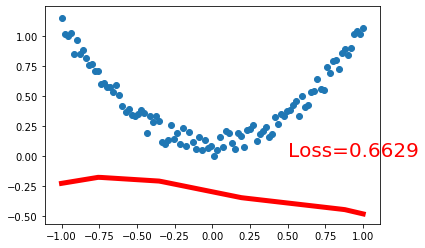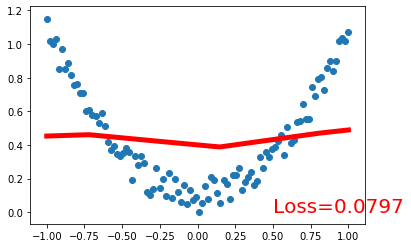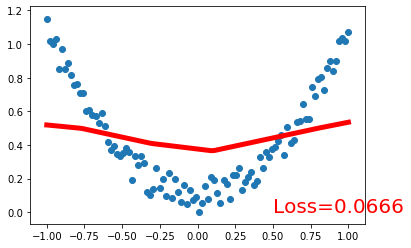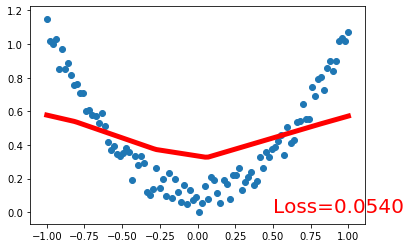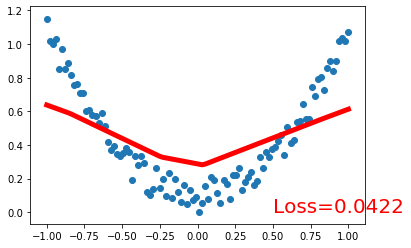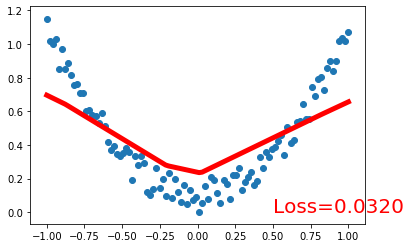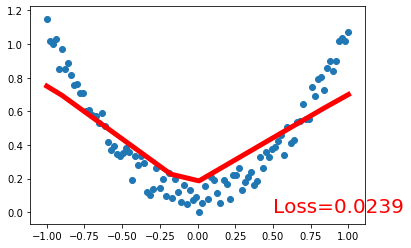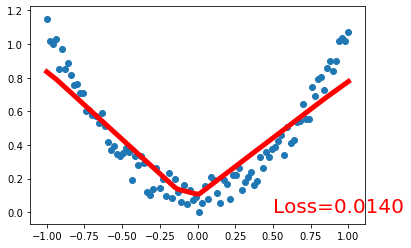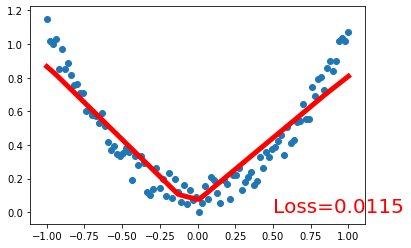301_PyTorch中文教程:回归分析-Regression
依赖软件包
- torch
- matplotlib
import torch
import torch.nn.functional as F
import matplotlib.pyplot as plt
%matplotlib inline
torch.manual_seed(1) # reproducible
<torch._C.Generator at 0x7f2c68165e90>
x = torch.unsqueeze(torch.linspace(-1, 1, 100), dim=1) # x data (tensor), shape=(100, 1)
y = x.pow(2) + 0.2*torch.rand(x.size()) # noisy y data (tensor), shape=(100, 1)
plt.scatter(x.data.numpy(), y.data.numpy())
plt.show()
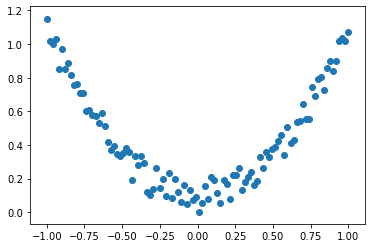
x[:10]
tensor([[-1.0000],
[-0.9798],
[-0.9596],
[-0.9394],
[-0.9192],
[-0.8990],
[-0.8788],
[-0.8586],
[-0.8384],
[-0.8182]])
y[:10]
tensor([[1.1515],
[1.0159],
[1.0014],
[1.0294],
[0.8508],
[0.9682],
[0.8517],
[0.8880],
[0.8168],
[0.7572]])
class Net(torch.nn.Module):
def __init__(self, n_feature, n_hidden, n_output):
super(Net, self).__init__()
self.hidden = torch.nn.Linear(n_feature, n_hidden) # hidden layer
self.predict = torch.nn.Linear(n_hidden, n_output) # output layer
def forward(self, x):
x = F.relu(self.hidden(x)) # activation function for hidden layer
x = self.predict(x) # linear output
return x
net = Net(n_feature=1, n_hidden=10, n_output=1) # define the network
print(net) # net architecture
Net(
(hidden): Linear(in_features=1, out_features=10, bias=True)
(predict): Linear(in_features=10, out_features=1, bias=True)
)
optimizer = torch.optim.SGD(net.parameters(), lr=0.2)
loss_func = torch.nn.MSELoss() # this is for regression mean squared loss
plt.ion() # something about plotting
for t in range(100):
prediction = net(x) # input x and predict based on x
loss = loss_func(prediction, y) # must be (1. nn output, 2. target)
optimizer.zero_grad() # clear gradients for next train
loss.backward() # backpropagation, compute gradients
optimizer.step() # apply gradients
if t % 10 == 0:
# plot and show learning process
plt.cla()
plt.scatter(x.data.numpy(), y.data.numpy())
plt.plot(x.data.numpy(), prediction.data.numpy(), 'r-', lw=5)
plt.text(0.5, 0, 'Loss=%.4f' % loss.data.numpy(), fontdict={'size': 20, 'color': 'red'})
plt.show()
plt.pause(0.1)
plt.ioff()
